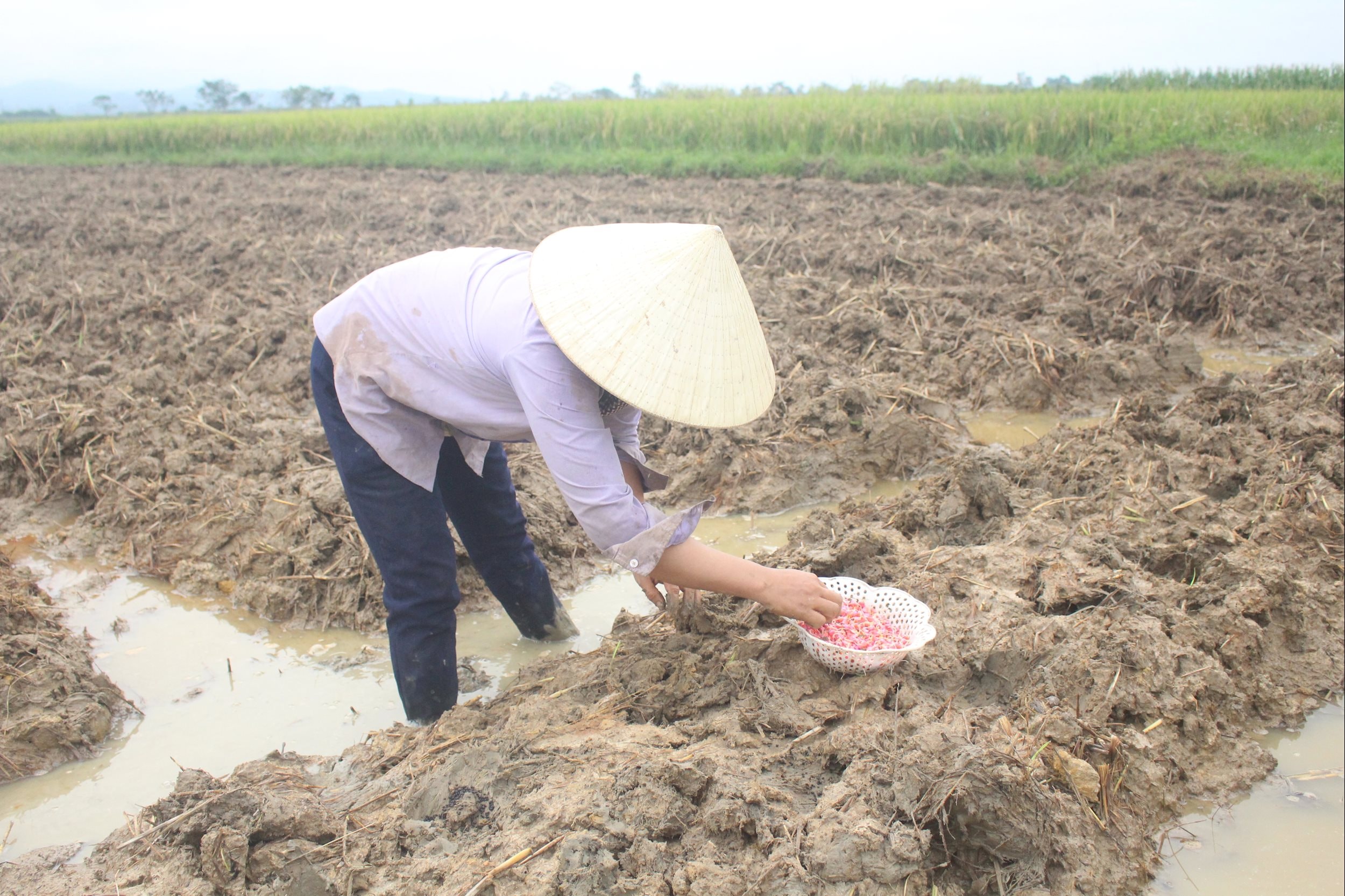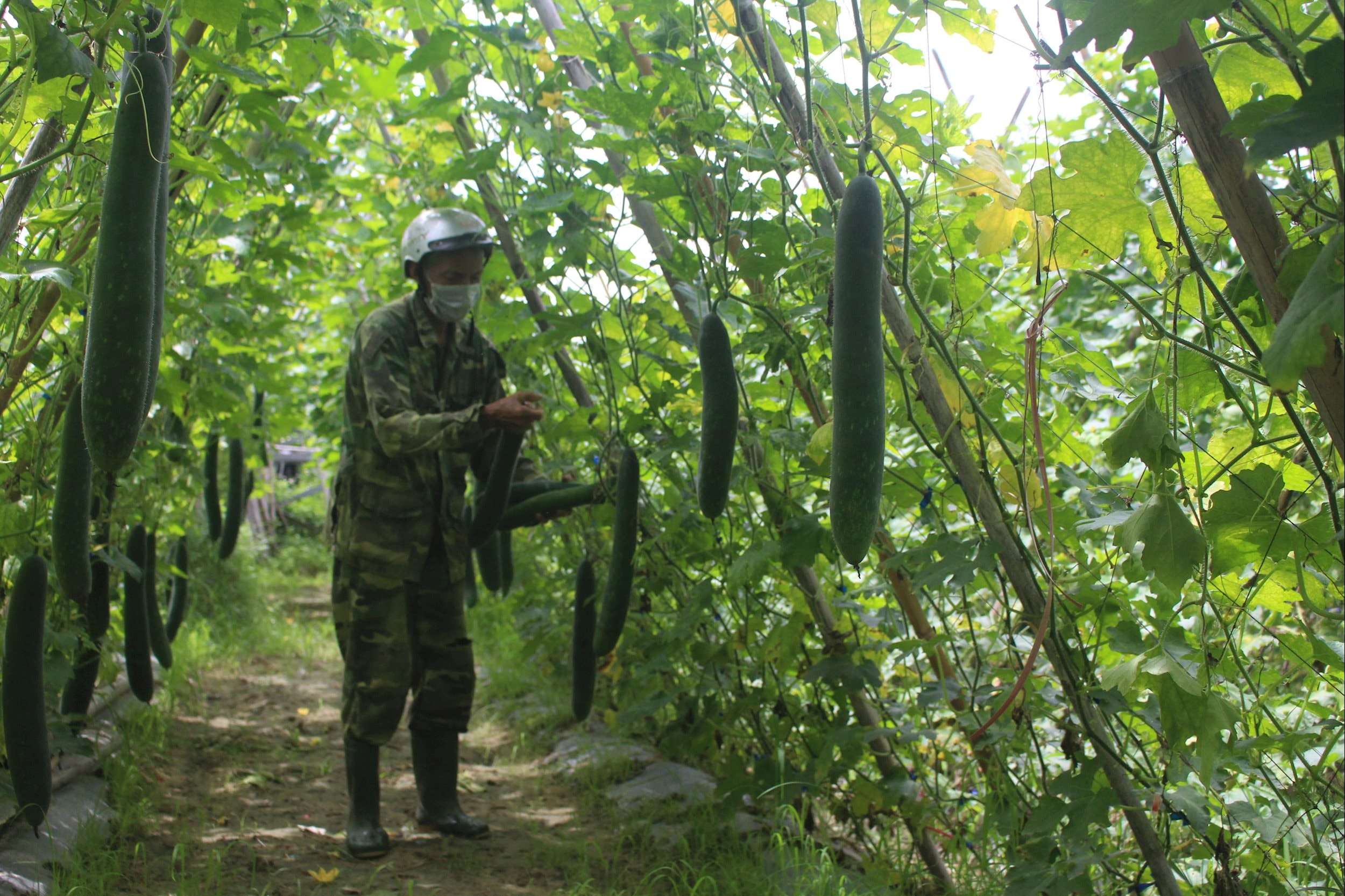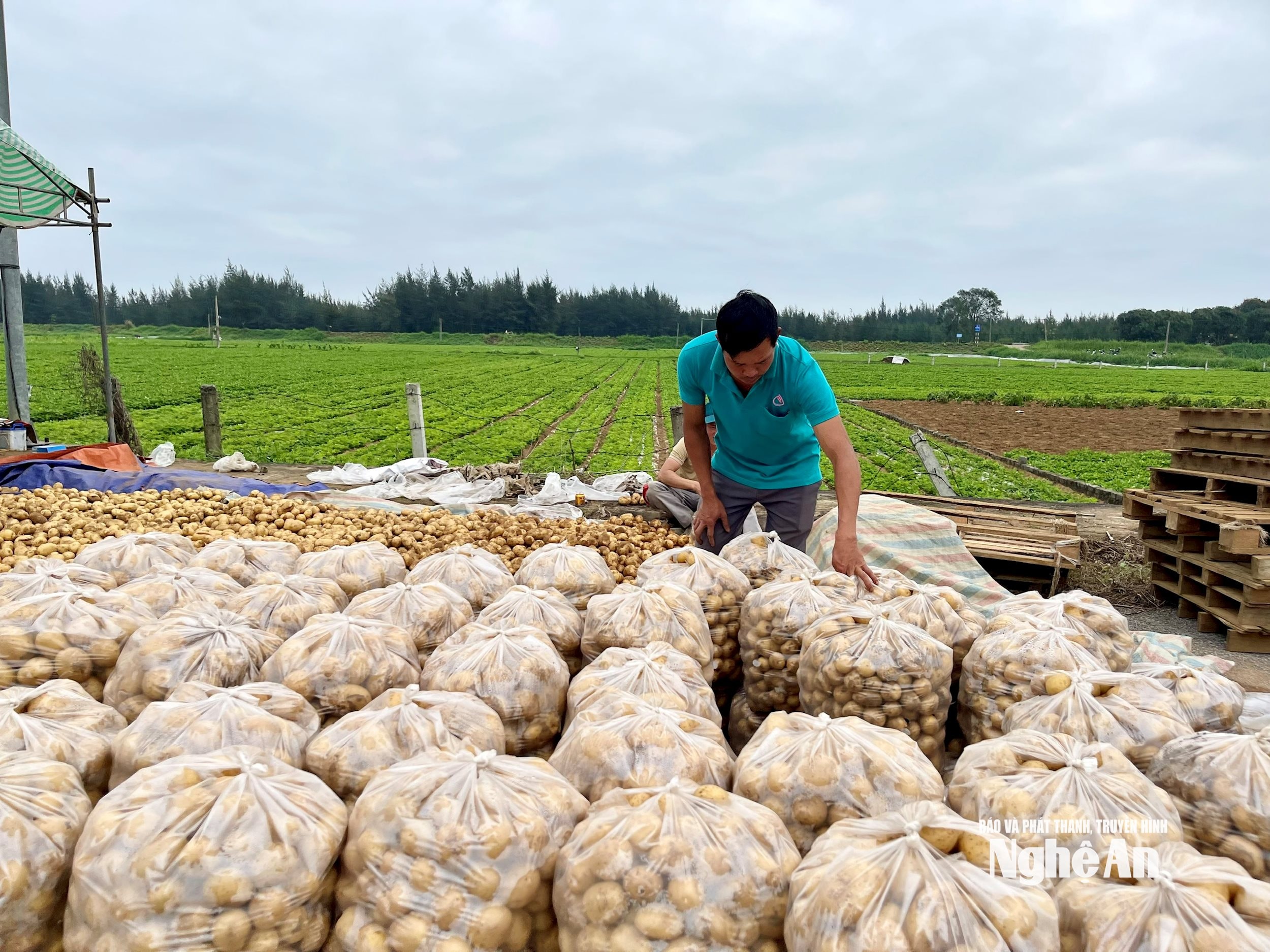Flexibility in winter crop production in Nghe An
Winter crop production in Nghe An often faces the risk of heavy rain, floods and waterlogging. To minimize risks and ensure sustainable production, avoiding the season and choosing and prioritizing suitable crops with high economic value on safe land are among the top requirements in winter crop production.
Selectsuitable plants
The family has 2 sao of land in Lum Hoa field. In recent years, Mrs. Phan Thi Hai in Chu Trac hamlet, Yen Thanh commune has grown squash to cut off the tops and sell them in the winter crop. The squash tops can be harvested continuously, are popular in the market, and have a high selling price, so the income is quite good.
“Dong Lum Hoa has higher land than other fields, so it can grow squash. Low-lying fields are easily flooded, and it is easy to lose the crop. However, I still do not dare to be subjective. Every year, I have to wait for the storm and flood season to pass, at least from November, before starting to plant. When planting, I also have to build a high mound so that the squash vines can spread well, and not plant directly on the field,” said Ms. Hai.
With a large agricultural land area and mainly rice land, the winter crop production in Yen Thanh commune is basically corn. However, this year, after the flood, 4 hectares of corn and 4 hectares of flowers were all washed away by the water. "The rain was so heavy, the water level was low for several days before receding, so all the corn died," said Tran Van Minh in Yen Thanh commune, frustrated. After the water level receded, he waited for the land to dry, then worked the land, and switched to growing short-term vegetables so that he could plant the spring rice crop in time.

Mr. Nguyen Van Duong - Chairman of Yen Thanh Commune People's Committee said that the commune's rice fields are mostly low-lying, so winter corn is only grown on high fields with better drainage.
However, this year, due to heavy rain and floods, the winter crops were completely damaged. "In the short term, we are focusing on directing that after the floods, we will switch to growing short-term and cold-loving vegetables such as cabbage, kohlrabi, carrots, etc. In the long term, this will also be the priority direction, to avoid early-season rain and floods, ensure the season for spring rice production, and also bring good income to farmers," said Mr. Nguyen Van Duong.
This year, in the same situation as many other localities, the flood has damaged and completely destroyed the newly planted corn, peanuts and vegetables in An Chau commune. After the rain, corn and peanuts cannot be planted because they are no longer in season, so the commune is organizing irrigation, drainage, and land preparation, so that after October 16, it will focus on planting short-term vegetables, which will be harvested in just 1 month, such as various types of cabbage, and then potatoes will be planted in association with businesses.

Mr. Hoang Cong Truong - Head of the Commune Economic Department said: Short time, easy to grow, high productivity and efficiency, stable consumption, so on sandy, high and well-drained land areas, people have switched to growing winter potatoes, especially in hamlets Dien Trung 1, Dien Trung 2, Dien An 1, Dien An 5... In the coming years, we will continue to prioritize switching to growing potatoes, not only limiting the impact of floods because they are grown on higher ground, but the planting season also only starts from the beginning of November, less affected by storms. Low-lying areas that used to grow peanuts will partially switch to growing short-term crops such as squash, pumpkin... to make it easier to manage and "dodge" the season.
Every year, people in Xuan Lam commune wait until "21 Le Lai, 22 Le Loi" to start sowing winter corn on alluvial land to avoid floods. Before that, in addition to some corn areas on high sandbanks, people only planted a small amount of corn on rice fields to be in time for spring rice production. According to Mr. Le Dinh Thanh - Secretary of the Commune Party Committee: Xuan Lam is a low-lying commune, so "dodging" the season to avoid unfavorable weather conditions is one of the top requirements in winter crop production.

On rice fields, corn is planted as early as possible, but depending on the weather forecast each year, the area, planting area and planting time are arranged appropriately. On alluvial land, planting is done when the flood and storm season is almost over, and to speed up the progress to ensure the season for spring corn, in the context of labor shortage, the commune focuses on solutions such as increasing the use of machinery, mechanization, and taking advantage of sunny weather to concentrate on production. This winter crop, Xuan Lam commune plans to plant more than 800 hectares of corn on alluvial land along the Lam River.
Towards ssafe and effective production
This year, according to forecasts, heavy rain, thunderstorms, hail and strong winds are concentrated in October and November, which coincide with the beginning and middle of the winter crop season; therefore, the risk of damage is very high, especially on rice fields. The whole province strives to plant 33,626 hectares of winter crops, of which 19,000 hectares are corn, 12,150 hectares of vegetables, in addition to sweet potatoes and potatoes.

With the characteristics of winter crop production, choosing the right crop for each land and climate condition is considered one of the factors that determine the success of production. To cope with the impact of weather, especially in the face of the trend of climate change causing serious impacts, Nghe An has focused on prioritizing solutions to avoid and minimize damage to winter crop production. Mr. Nguyen Tien Duc - Head of the Department of Crop Production and Plant Protection of the province said: Nghe An only produces in areas with proactive irrigation and good drainage, at the same time, prioritizes the selection of suitable crops, putting the goal of safe and effective production first.
Currently, in the winter crop production in Nghe An, there are two main crops, occupying the majority of the area: corn and various vegetables. According to agricultural experts, instead of growing corn for grain, which often falls and is flooded, causing total loss, localities should promote linkages, switch to growing biomass corn, which can be sold to dairy farms after only 60 - 70 days; or only grow on fertile land that does not produce spring rice so that the crop schedule can be arranged to be pushed back, harvested in February and March of the following year to avoid early season floods. Vegetable crops should prioritize switching to growing short-term, cold-loving vegetables, planted after the end of the floods. However, along with that, it is necessary to strengthen production linkages towards commodities, have a chain of linkages and product consumption to ensure stable output.

Localities can also choose crops that can withstand or recover well from short-term flooding, while also bringing high economic value such as potatoes, which have a short growing period, or sweet potatoes with strong roots and stems that creep on the ground, helping the plants to better withstand wind and rain. Sandy, well-drained coastal or alluvial soils can be used to grow carrots, radishes, squash, cucumbers, etc. For corn on 2-rice land and alluvial soils along rivers and streams that are prone to flooding, priority should be given to growing corn for fresh consumption, which has a short growing period, or growing corn for biomass to reduce seasonal pressure.
In particular, fertile land along the river banks must wait for the flood to end before planting. However, in the current conditions, areas that have been severely damaged and need to restore production immediately after the water recedes, should choose crops with short cycles to take advantage of the remaining time of the winter crop without affecting the spring crop production such as kohlrabi, cabbage, and various vegetables.
Localities need to strongly shift from traditional production thinking to adaptive agricultural economic thinking, prioritizing short-term, flood-tolerant crop varieties and thoroughly applying technical measures to prevent and combat flooding.
Mr. Nguyen Tien Duc - Head of the Provincial Department of Crop Production and Plant Protection
